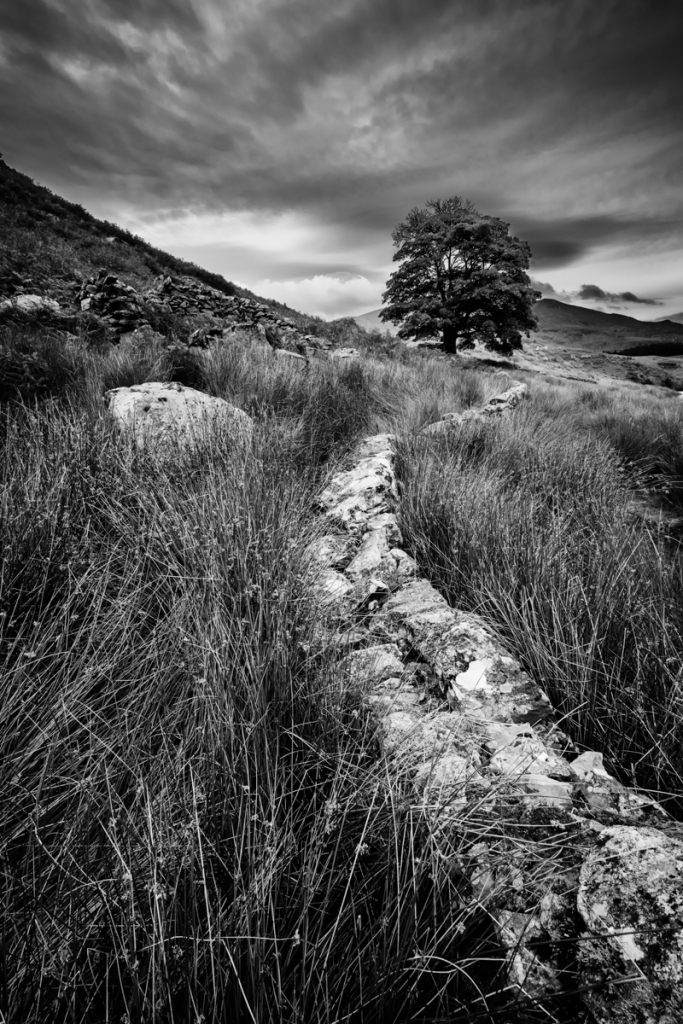On a recent week spent in and around Eryri National Park in North Wales, one locality drew us back for several visits. Llyn y Dywarchen is a secluded little llyn compared to the many more famous ones around the National Park, several of which have become iconic photographic locations. It is located above the village of Drws y Coed in Dyffryn Nantlle, near Rhyd Ddu, a stop on the Welsh Highland Railway and a popular starting point for several longer walks. What makes it a little more special is the opportunity to photograph more intimate landscapes with foreground interest and using man made features as leading lines.

Llyn y Dywarchen is a readily accessible photographic location, with a small car park at the side of the llyn and the walk along the dam and around to the far side of the llyn on level ground, around 250 to 300m to reach the small ruin on the far side of the llyn from the car park. Yr Wyfdda is visible from the llyn though partly obscured by nearer hills and paths to higher ground are steep.

For centuries, the llyn was famous for its reported floating island with Giraldus Cambrensis noting in 1188 that was “driven from one side to the other by the force of the wind”. While such stories may seem more the subject of Welsh folklore, this one was seeming verified by none other than the astronomer Edmund Halley in 1698 reportedly swam out to check that it did indeed float! The island visible today most certainly is not floating, however, leaving one to wonder what became of Halley’s “floating island” – a section of floating peat bog perhaps?




